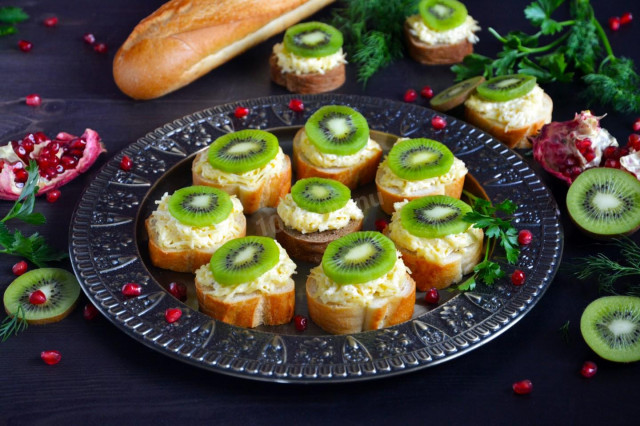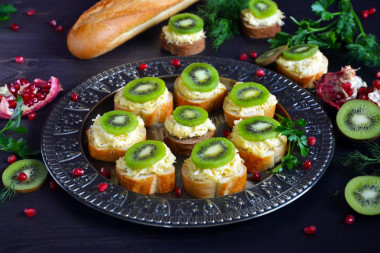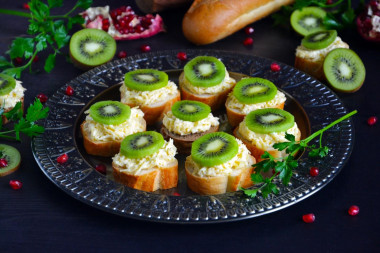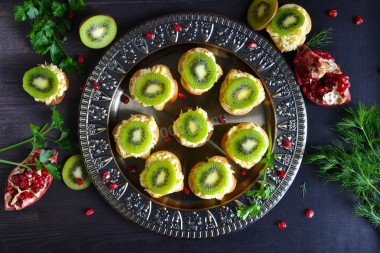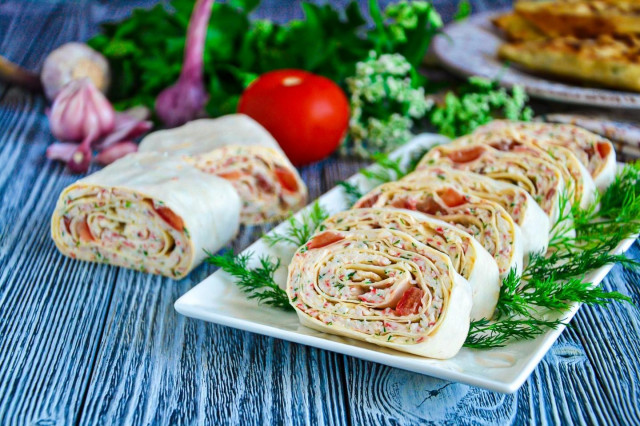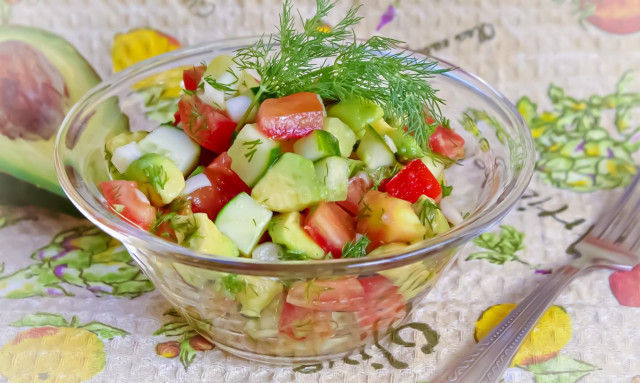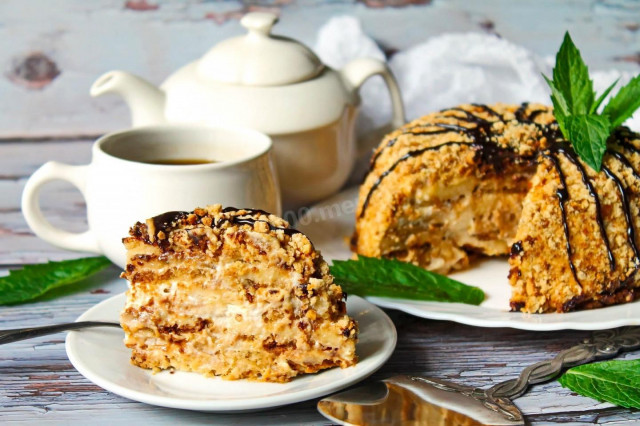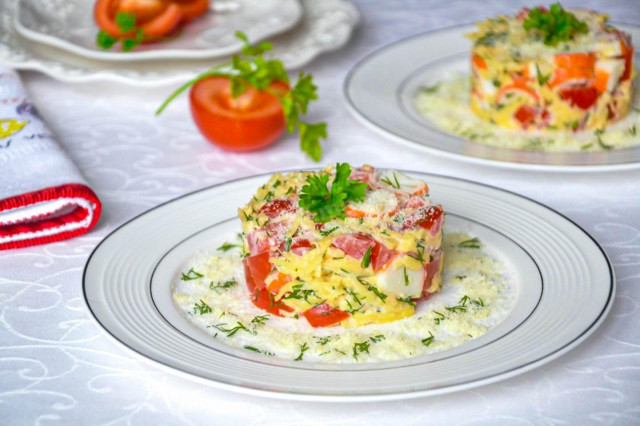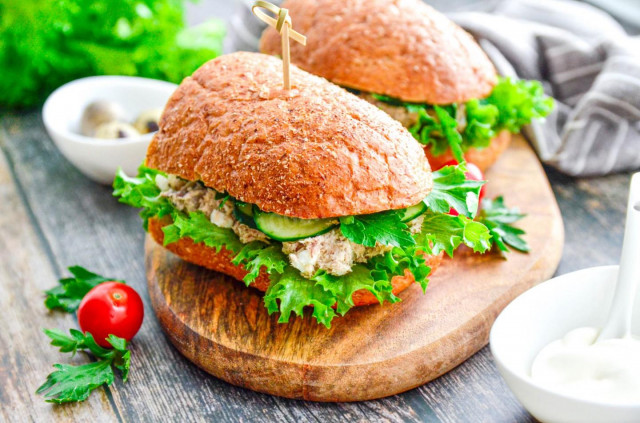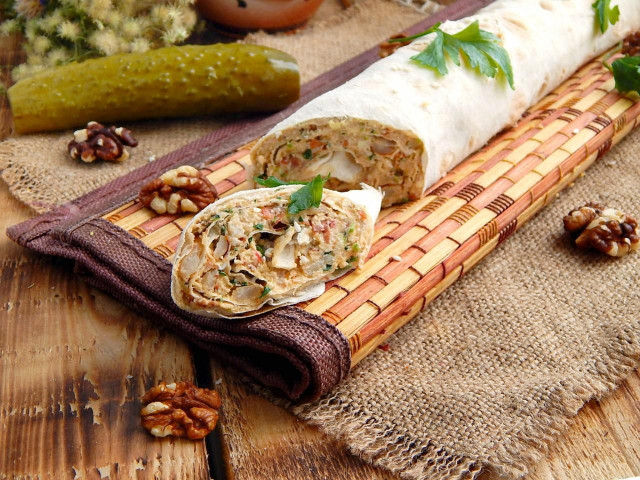Composition / ingredients
Step-by-step cooking
Step 1:
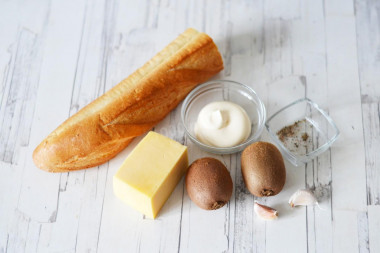
How to make sandwiches with kiwi, garlic and cheese? Very simple. First, prepare the necessary ingredients. As a basis for sandwiches, you can choose a baguette, ordinary wheat or rye bread. With a baguette, these sandwiches look more festive and beautiful. And which bread is better to use - wheat or rye, choose for yourself. I like it better with wheat bread.
Step 2:
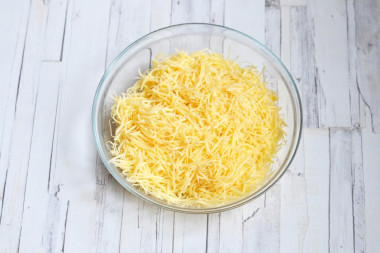
Grate the cheese on a medium grater.
Step 3:
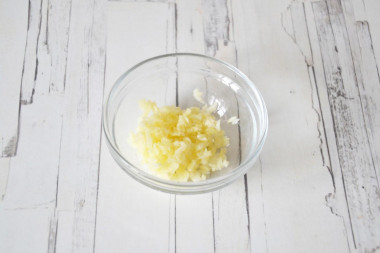
Pass the garlic through the press.
Step 4:
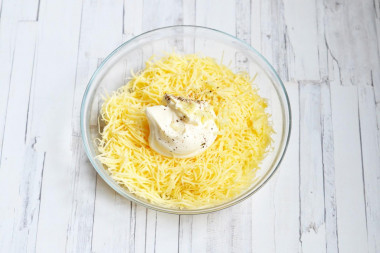
In a bowl, combine grated cheese, mayonnaise, garlic passed through a press and ground black pepper.
Step 5:
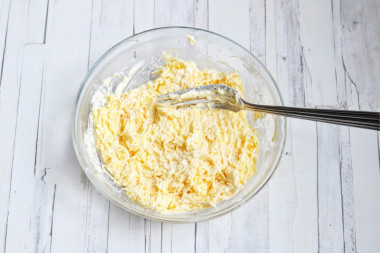
Mix everything thoroughly. If the mass of mayonnaise does not seem enough, you can add more to your liking.
Step 6:
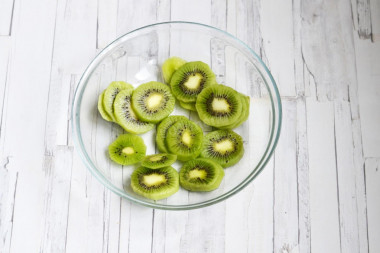
Peel the kiwi and cut into thin slices. It is important to choose the right kiwi: they should be ripe, but not overripe. Overripe fruits do not keep their shape well and spread when sliced. In addition, the taste of such fruits deteriorates. Therefore, choose dense fruits, not soft, but also not too hard - they may turn out to be unripe and too acidic.
Step 7:
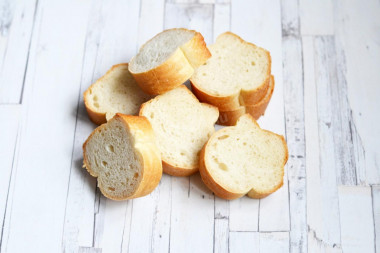
Cut the baguette into slices about 1.5 cm thick. If desired, you can dry the bread in a toaster or in a dry frying pan until a golden crust appears.
Step 8:

Put a little cheese and garlic mass on each slice of baguette. Place a slice of kiwi on top of each sandwich.
Step 9:
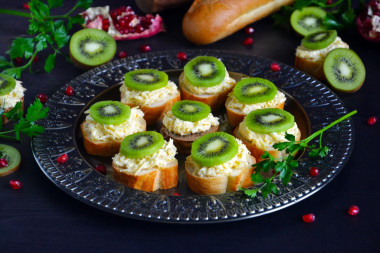
Place the finished sandwiches on a platter and serve immediately to the table. Bon appetit!
For festive feasts, such sandwiches can be prepared in advance, for example, in the evening to prepare a cheese filling and store in the refrigerator in a hermetically sealed container. And before the feast, quickly cut bread and kiwi and make sandwiches.
Since the degree of salinity, sweetness, bitterness, sharpness, acid, burning is individual for everyone, always add spices, spices and seasonings, focusing on your taste! If you put some of the seasonings for the first time, then keep in mind that there are spices that it is especially important not to shift (for example, chili pepper).
It is better to prepare mayonnaise yourself. It will be tastier and healthier. See here interesting
recipes for homemade mayonnaise.
Also, as a dressing, you can use not only mayonnaise, but also sour cream or natural yogurt. They can be taken separately or mixed with mayonnaise in any proportion to your taste - this will reduce the calorie content of the dish.
Caloric content of the products possible in the composition of the dish
- Dutch cheese - 352 kcal/100g
- Swiss cheese - 335 kcal/100g
- Russian cheese - 366 kcal/100g
- Kostroma cheese - 345 kcal/100g
- Yaroslavsky cheese - 361 kcal/100g
- Altai cheese 50% fat content - 356 kcal/100g
- Soviet cheese - 400 kcal/100g
- Cheese "steppe" - 362 kcal/100g
- Uglich cheese - 347 kcal/100g
- Poshekhonsky cheese - 350 kcal/100g
- Lambert cheese - 377 kcal/100g
- Appnzeller cheese with 50% fat content - 400 kcal/100g
- Chester cheese with 50% fat content - 363 kcal/100g
- Edamer cheese with 40% fat content - 340 kcal/100g
- Cheese with mushrooms of 50% fat content - 395 kcal/100g
- Emmental cheese with 45% fat content - 420 kcal/100g
- Gouda cheese with 45% fat content - 356 kcal/100g
- Aiadeus cheese - 364 kcal/100g
- Dom blanc cheese (semi-hard) - 360 kcal/100g
- Lo spalmino cheese - 61 kcal/100g
- Cheese "etorki" (sheep, hard) - 401 kcal/100g
- White cheese - 100 kcal/100g
- Fat yellow cheese - 260 kcal/100g
- Altai cheese - 355 kcal/100g
- Kaunas cheese - 355 kcal/100g
- Latvian cheese - 316 kcal/100g
- Limburger cheese - 327 kcal/100g
- Lithuanian cheese - 250 kcal/100g
- Lake cheese - 350 kcal/100g
- Gruyere cheese - 396 kcal/100g
- Garlic - 143 kcal/100g
- Ground black pepper - 255 kcal/100g
- Kiwi - 48 kcal/100g
- Salad mayonnaise of 50% fat content - 502 kcal/100g
- Light mayonnaise - 260 kcal/100g
- Provencal Mayonnaise - 624 kcal/100g
- Provencal mayonnaise - 627 kcal/100g
- Table mayonnaise - 627 kcal/100g
- White bread - 266 kcal/100g

